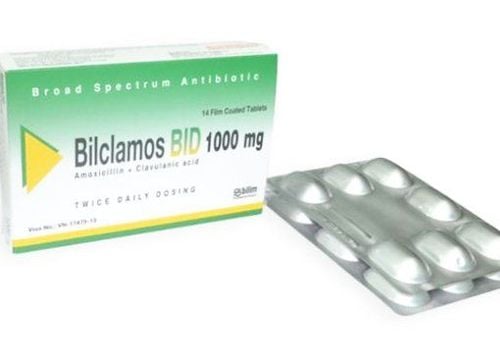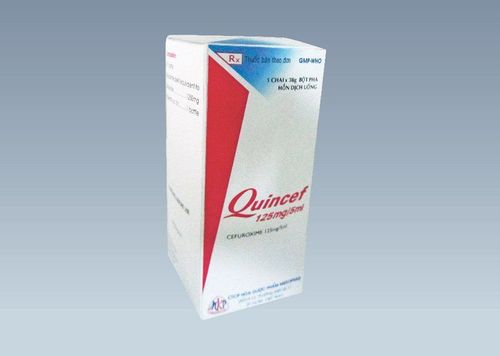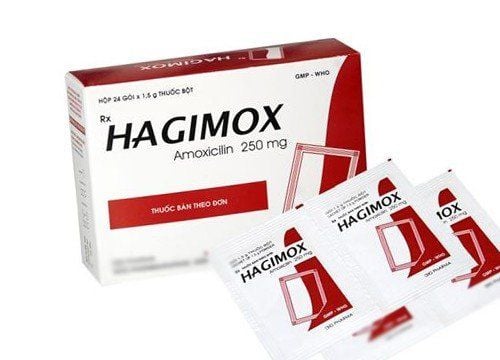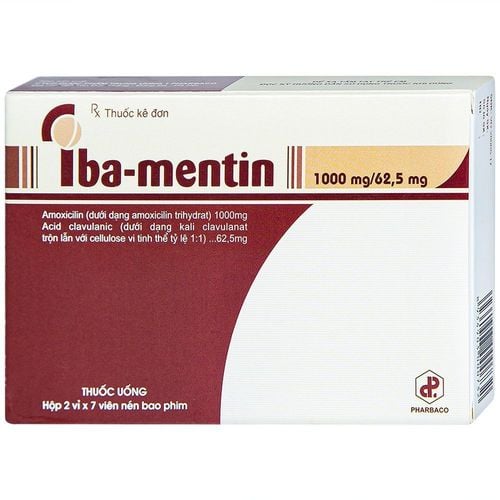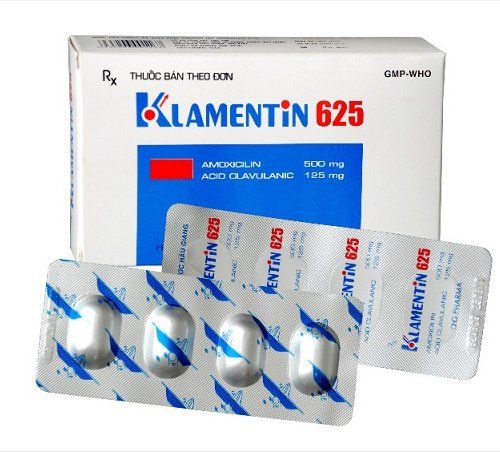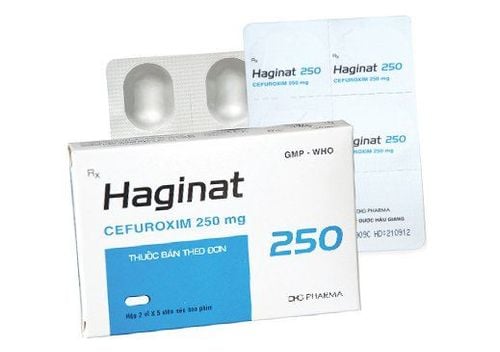This is an automatically translated article.
The article is professionally consulted by Master, Resident Doctor Dang Thi Ngoan - Pediatrician - Neonatologist - Department of Pediatrics - Neonatology - Vinmec Ha Long International Hospital.Seasonal change is the time when children are susceptible to respiratory infections, which recur again and again, making it difficult for children to live and study. Proper care and monitoring for children will help them feel more comfortable, get better quickly and prevent dangerous complications.
1. What is acute respiratory infection in children?
Acute respiratory infections in children is a group of bacterial or viral diseases that cause acute inflammatory lesions in part or the entire respiratory system from the ears, nose, throat to the lungs, membranes. lung. The disease usually presents with a cough for no more than 30 days.
This is the most common cause of death in children, especially children under 5 years old. It is estimated that a child under the age of 5 years may experience acute respiratory infections 5 to 8 times per year. With good care, most children will recover on their own within 10-14 days. However, about 20-25% of children with acute respiratory infections will progress to pneumonia in children - the leading cause of death in children under 5 years of age in developing countries.
There are 2 types of acute respiratory infections:
Upper respiratory tract infection: An infection of the ear - nose - throat area, usually caused by a virus, with good care, most children will recover on their own. Inflammation of the lower respiratory tract: Including bronchiolitis, pneumonia ... In which, pneumonia is the most dangerous. Therefore, children need to be diagnosed with pneumonia early to receive timely treatment, avoid complications and death.
2. Handling and care
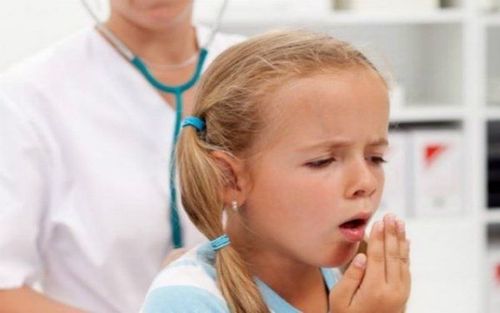
2.1 The case of children with common signs When seeing a child with symptoms such as cough, common cold, fever, runny nose, breathing through the mouth, normal breathing, parents do not need to be too worried, because The disease will clear up on its own within 2 weeks. The cause of this condition is usually viral, so antibiotics are not effective. Parents just need to treat and take care of their children at home with the following steps:
If the child coughs a lot, only use cough medicine of herbal origin such as white rose, steamed kumquat with honey. Clean the nose and mouth of the child with 9% saline, put in each nostril to dilute the nasal secretions, then remove the nasal secretions with a nasal aspirator. Help children cough and expel phlegm as effectively as patting the child's back, preferably before a meal or as early as 1 hour after eating to avoid causing vomiting. Method: bend the hand at the wrist and then cup the hand, keeping the thumb pressed against the index finger; pat left then right, about 3-5 minutes in each area. Breastfeed your baby more often than usual. When feeding, you can let the baby let go of the breast in the middle of the feeding, and then continue to breastfeed. If the baby has difficulty suckling, express breast milk and feed the baby with a spoon. If the baby is not breastfed, give cow's milk in the form of infant formula according to age. Complementary foods such as porridge are thinner than usual but have enough nutrients such as rice + meat or eggs, beans + green vegetables + fat. It is advisable to divide many small meals during the day so that children receive enough food and always change dishes to stimulate appetite and help children eat well. Let children drink more fruit juice to provide vitamins A, C, iron...and make up for the loss of water due to fever. Thermocouple to see if the child has a fever, if the child has a fever of 37.5 degrees Celsius to less than 38.5 degrees Celsius, it is necessary to expand and remove clothes for the child; Use a warm washcloth to apply to your forehead, armpits, and groin. If the child has a fever of C, it is necessary to use fever-reducing medicine for the child. Limit the source of the disease, regularly clean the room, clean the care tools and put the child in a well-ventilated place, keep the child's body clean. 2.2 In case the child has severe signs When seeing a child with prolonged cough, rapid breathing, difficulty breathing, poor feeding, inability to drink, foaming at the mouth, more fatigue, chest constriction, this is a manifestation of pneumonia - very dangerous complications. Therefore, the first thing parents need to do is count the breaths in 1 minute when the child is lying still. A child is considered tachypnea when:
Breathing rate is over 60 breaths/minute for a child under 2 months of age Breathing rate is more than 50 breaths/minute for a child aged 2-12 months Breathing rate is over 40 breaths/minute for a child from 2 to 12 months of age. 12 months to 5 years old When visiting Vinmec International General Hospital, doctors need to perform clinical examination and perform paraclinical tests to diagnose pneumonia in children. In which symptoms such as fever, cough, rapid breathing, chest indrawing are the most important manifestations for clinical diagnosis and determining the severity of the disease. Laboratory tests that are ordered by a doctor after a parent brings a child with suspected pneumonia to the doctor includes:
Blood test A complete blood count test can identify infection. The white blood cell count increases when a bacterial infection is present. Sometimes doctors draw blood from a vein for culture. It can help identify the type of bacteria causing the infection and thus select the right antibiotic to treat it.
Urinalysis A urine antigen test can help your doctor diagnose pneumonia caused by pneumococcal (Streptococcus pneumoniae) and Legionella pneumophila bacteria.
Chest X-ray Chest X-ray helps confirm the diagnosis, contributes to determining the cause, location of the infection and the severity of pneumonia.
Sputum culture Your sputum taken from a deep cough can be tested in a lab to identify the bacteria that is causing the illness. This test can help determine the best antibiotic to treat.
CT scan CT (computerized tomography) scans provide more detailed pictures of the lungs in severe cases. A CT scan may also be beneficial in cases where treatment for pneumonia has not been effective.
Measurement of pulse oxygen saturation The ideal oxygen saturation in the meter is above 95%. Pneumonia can block oxygen from the lungs into the bloodstream. Therefore, measuring blood oxygen levels can help diagnose pneumonia. Pulse oximetry is a simple, non-invasive technique for monitoring oxidative changes in blood oxygen levels. This test uses a device called a pulse oximeter that indirectly monitors the percentage of oxygen-containing hemoglobin in the blood.
Arterial blood gases An arterial blood gas test is used to measure the degree of hypoxia in the blood. For this test, a blood sample is taken from an artery, mainly in the wrist. It helps to determine the oxygen-carbon dioxide gas exchange, determining the severity of the disease.
Bronchoscopy Bronchoscopy may be indicated if you have severe pneumonia or do not improve after treatment with antibiotics. In this procedure, a thin, flexible tube with a camera attached is used to view the windpipe and bronchi directly. This allows the doctor to collect fluid or a small tissue sample and determine the cause of the infection.
With modern equipment, sterile space, minimizing the impact as well as the risk of disease spread. Along with that is the dedication from the doctors with professional experience with pediatric patients, making the examination no longer a concern of the parents.
Please dial HOTLINE for more information or register for an appointment HERE. Download MyVinmec app to make appointments faster and to manage your bookings easily.
3. How to prevent acute respiratory infections in children

Ensure breastfeeding right after birth as soon as possible Perform full vaccinations according to the immunization schedule Adequate and balanced nutrition, which helps to increase the child's resistance Children should be in a well-lit room, Cool, good air circulation. If using an air conditioner, parents should pay attention to adjust the temperature difference between indoor and outdoor from 5-7°C so that the child can adapt. Keep children warm, avoid exposure to smoke, dust, tobacco, polluted air, cold air. Children's immune systems are not yet complete, so when adults have respiratory illnesses, they should be kept clean and isolated to avoid infecting children. At the same time, do not forget to wash your hands before and after taking care of the child. Acute respiratory infections in children are a group of bacterial or viral diseases that cause acute inflammatory lesions of part or all of the respiratory system. The disease can cause dangerous complications, so when the child has abnormal signs, parents should take the child to the medical center for examination and treatment.
As a key area of Vinmec Health system, Pediatrics Department always brings satisfaction to customers and is highly appreciated by industry experts with:
Gathering a team of top doctors and nurses in Pediatrics : consists of leading experts with high professional qualifications (professors, associate professors, doctorates, masters), experienced, worked at major hospitals such as Bach Mai, 108.. Doctors All doctors are well-trained, professional, conscientious, knowledgeable about young psychology. In addition to domestic pediatric specialists, the Department of Pediatrics also has the participation of foreign experts (Japan, Singapore, Australia, USA) who are always pioneers in applying the latest and most effective treatment regimens. . Comprehensive services: In the field of Pediatrics, Vinmec provides a series of continuous medical examination and treatment services from Newborn to Pediatric and Vaccine,... according to international standards to help parents take care of their baby's health from birth to childhood. from birth to adulthood Specialized techniques: Vinmec has successfully deployed many specialized techniques to make the treatment of difficult diseases in Pediatrics more effective: neurosurgery - skull surgery, stem cell transplantation. blood in cancer treatment. Professional care: In addition to understanding children's psychology, Vinmec also pays special attention to the children's play space, helping them to have fun and get used to the hospital's environment, cooperate in treatment, improve the efficiency of medical treatment. Doctor Dang Thi Ngoan used to be a lecturer in the Department of Pediatrics - Hai Phong University of Medicine and Pharmacy. Having been granted certificates in Pediatrics at home and abroad such as: Westmead Hospital, Australia; Hai Phong Medical University. Currently, Doctor Ngoan is a pediatrician - neonatologist at the Department of Neonatology at Vinmec Ha Long International Hospital.
Please dial HOTLINE for more information or register for an appointment HERE. Download MyVinmec app to make appointments faster and to manage your bookings easily.





